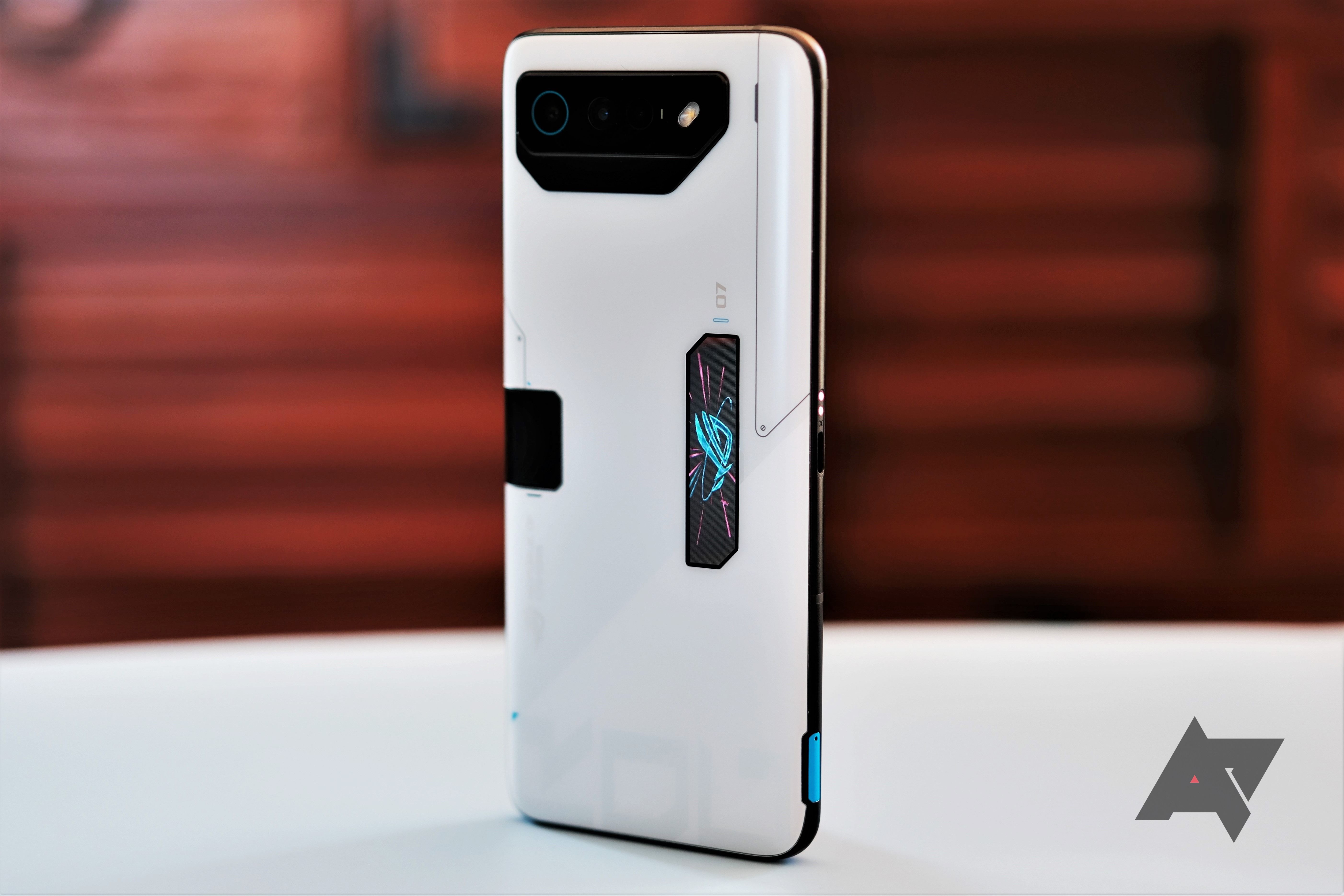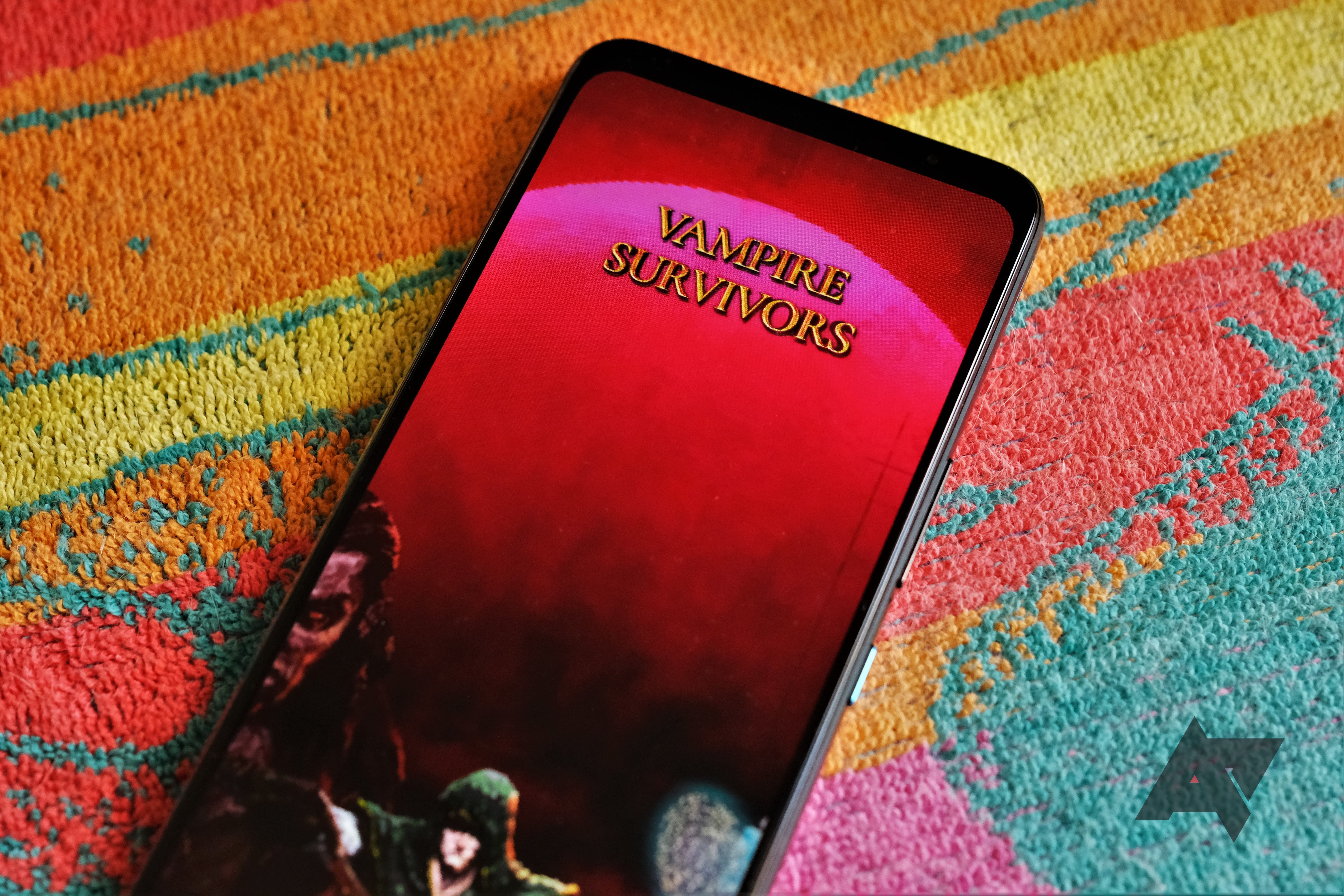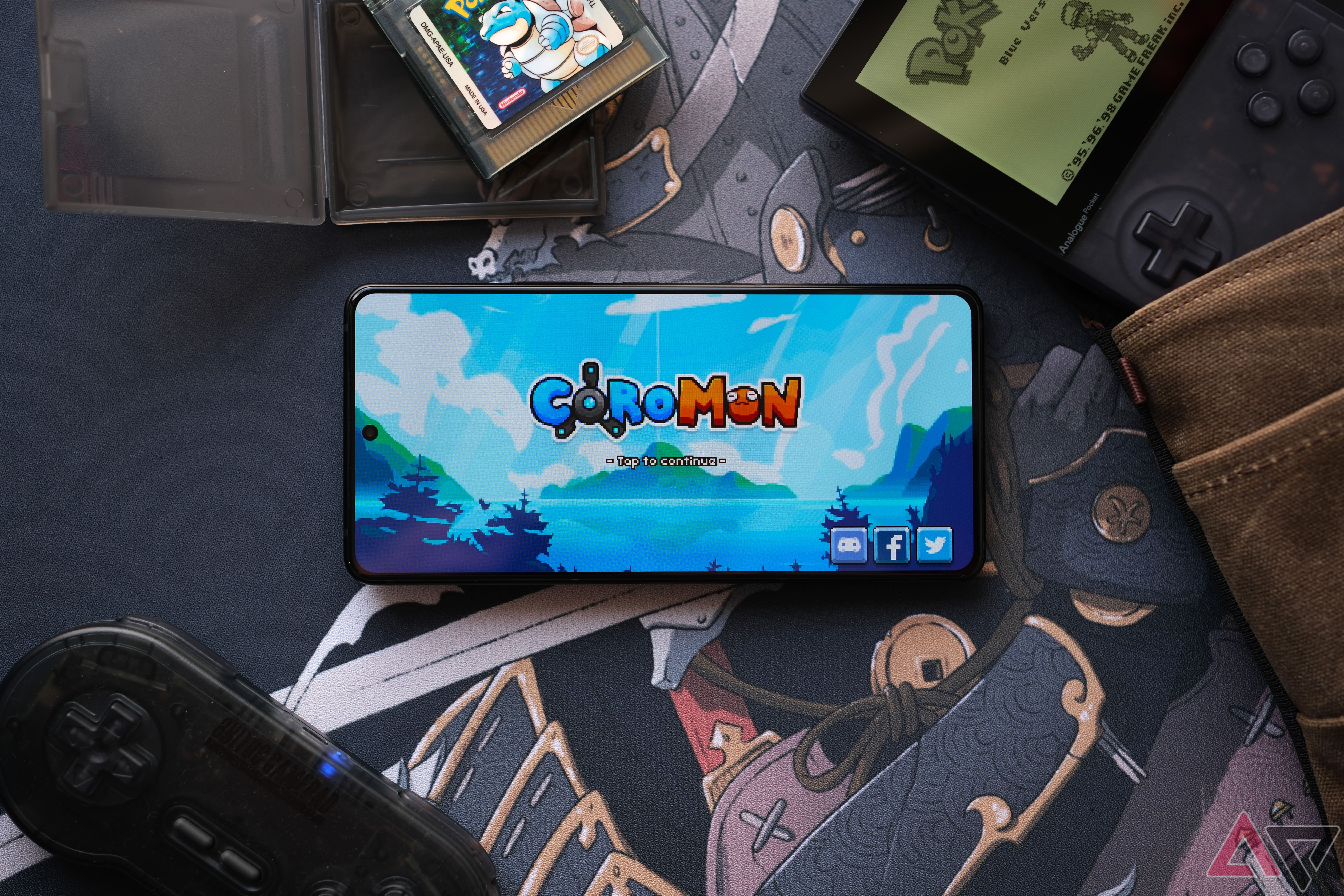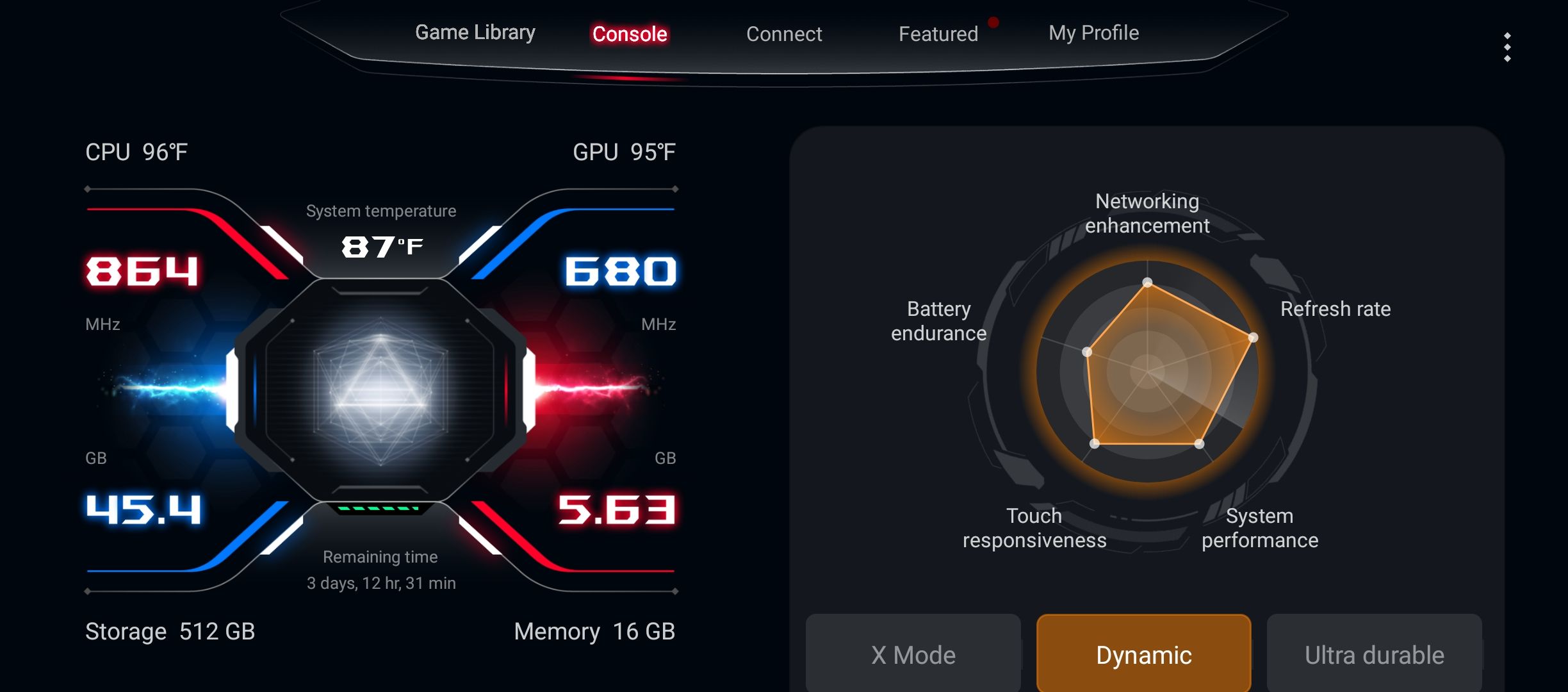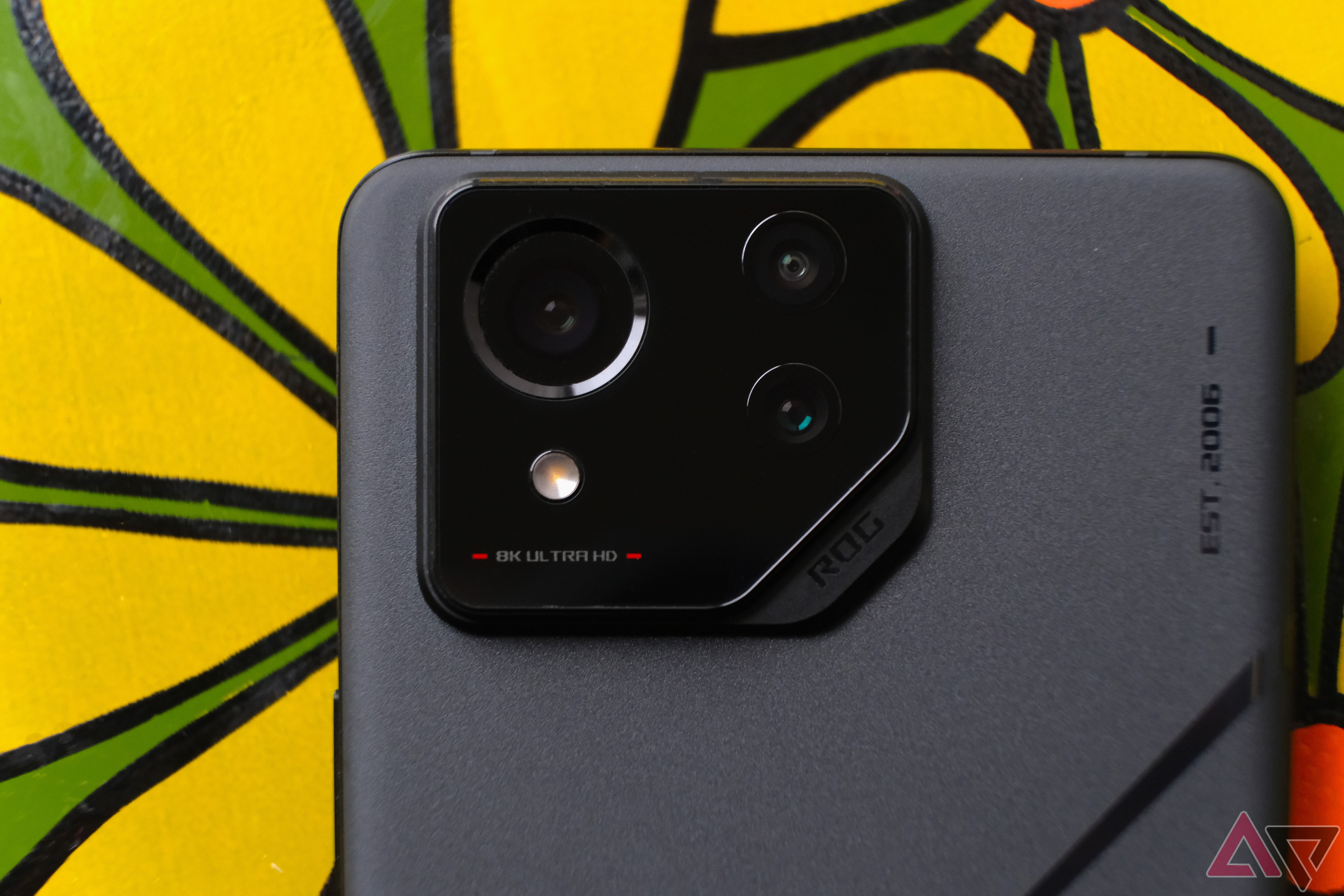-
Asus ROG Phone 8
All-round flagship$980 $1100 Save $120If you need a flagship phone that can handle serious gaming, the ROG Phone 8 is it. While the camera system might not match dedicated flagships, it offers everything else you could ask from a flagship phone. Plus, it’s still a great machine to game on.
Pros- Ergonomic design
- Bezel-less, brighter display
- IP68 rating, wireless charging
Cons- Punch-hole display might be irksome
- No more front-facing speakers
- Smaller battery
-
Asus ROG Phone 7
Gaming titanFor dedicated mobile gamers, the ROG Phone 7 is possibly the best mobile hardware package to game on. It features a mammoth battery, impressive cooling, and a brilliant speaker system. Just don’t expect it to match every other feature found on $1000 phones.
Pros- Bezels for comfrotable grip
- Fantastic speakers
- Mammoth battery
Cons- No IP rating
- No wireless charging
- Weak camera hardware
For years, Asus’s ROG Phone series has pushed the boundaries of mobile gaming, catering to the most demanding players with outlandish specs and features. Last year’s ROG Phone 7 was no exception, boasting specs that made even the most dedicated mobile gamers drool.
This year’s ROG Phone 8 marks a bold departure from the series’ tried-and-tested formula in more ways than one. While it might seem like it’s straying from its gaming DNA, it also presents itself as one of Asus’s most well-rounded flagship phones in recent memory. So, how do these two phones compare, and which one should you choose?
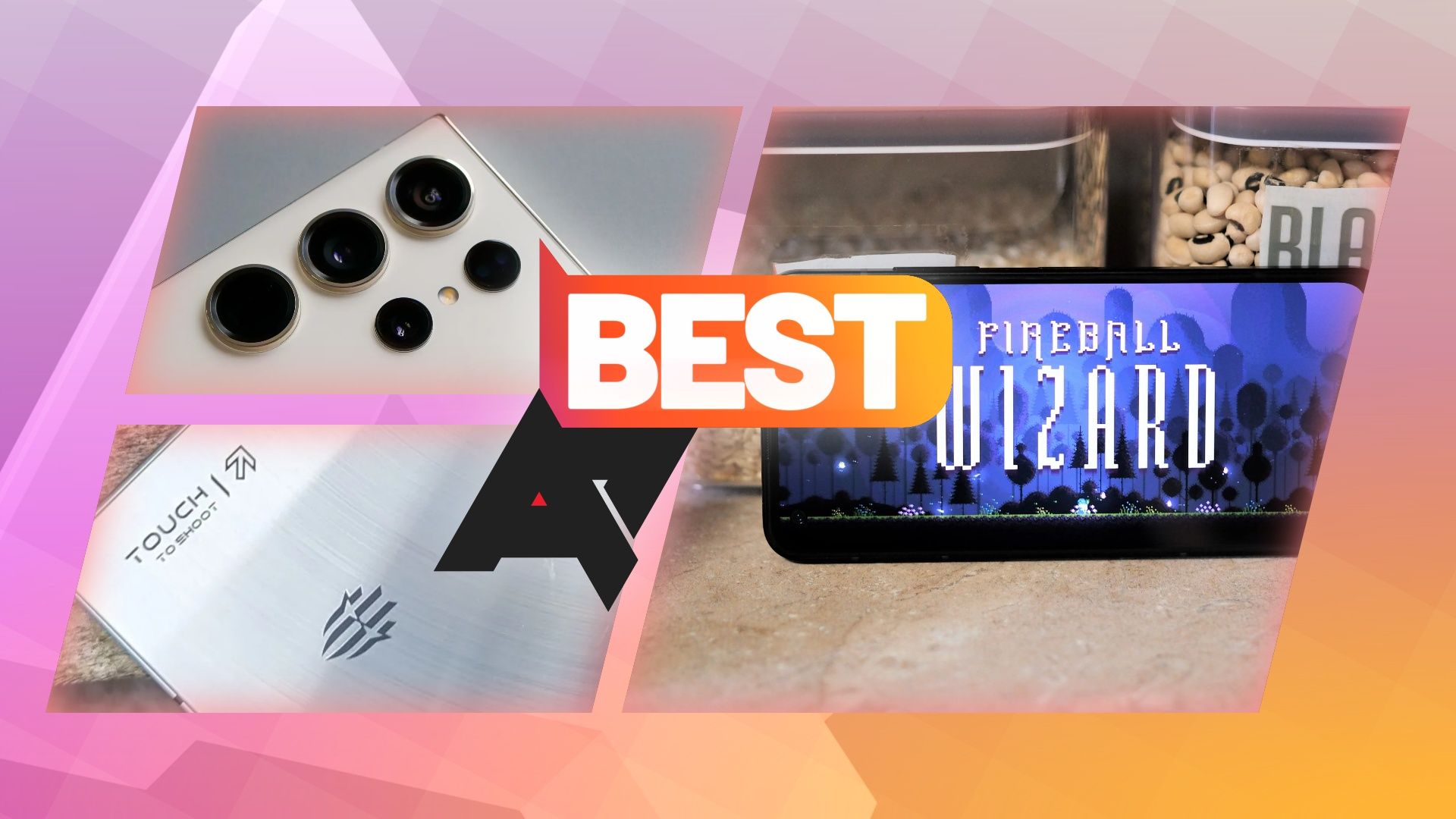
Best gaming phones in 2024
Looking to pick up a new smartphone that’s great for gaming? These are the best gaming phones on the market
Price, availability, and specs
The Asus ROG Phone 8, announced in early 2024, is out now. As of now, only the 16GB/256GB storage variant, which is priced at $1,099 on the Asus e-store, has been confirmed for the US market. However, you can find third-party listings for as low as $980 on Amazon. The ROG Phone 8 series also has two Pro variants, featuring an eye-catching LED-matrix display on the back instead of the traditional RGB logo on the vanilla Phone 8. The ROG Phone Pro 16GB/512GB variant is priced at $1,199, while the beefier model, with 24GB RAM and a whopping 1TB of storage, comes in at $1,499.
In contrast, the ROG Phone 7 made its debut in the US market back in June 2023, with a starting price of $999 for the 12GB/256GB variant, while the 16GB/512GB variant was priced at $1,099. Enthusiasts seeking the pinnacle of the ROG Phone 7 experience could opt for the Ultimate version with a color LED display at the back, which was priced at $1,299. It looks like the ROG Phone 7 series is no longer officially sold by Asus, and the Amazon listings for the phone also demand caution. Some of those listings are selling the China/Global variant of the ROG Phone 7, which could lead to complications in warranty support or US carrier compatibility.
-
Asus ROG Phone 8 Asus ROG Phone 7 SoC Qualcomm Snapdragon 8 Gen 3 Qualcomm Snapdragon 8 Gen 2 Display type LTPO AMOLED, 165Hz AMOLED, 165Hz Display dimensions 6.78″ 6.78″ Display resolution 1080 x 2400 2448 x 1080 RAM 12GB, 16GB, or 24GB 12GB or 16GB Storage 256GB, 512GB, or 1TB 256GB or 512GB Battery 5,500mAh 6,000mAh Charge speed 65W wired, 15W wireless 65W wired Ports USB-C, 3.5mm headphone jack USB-C, 3.5mm headphone jack Operating System Android 14 Android 14 Front camera 32MP RGBW 32MP, f/2.5 Rear camera 50MP, f/1.9 main; 13MP, f/2.2 ultrawide; 32MP, f/2.4 telephoto 50MP, f/1.9 main; 13MP, f/2.2 ultrawide; 5MP, f/2.0 macro Wi-Fi connectivity Wi-Fi 7 Wi-Fi 7 Connectivity NFC NFC Bluetooth Bluetooth 5.3 Bluetooth 5.3 Dimensions 163.8 x 76.8 x 8.9mm 173 x 77 x 10.3mm Weight 225g 239g IP Rating IP68 IP54 Colors Rebel Grey, Phantom Black Phantom Black, Storm White Stylus No No
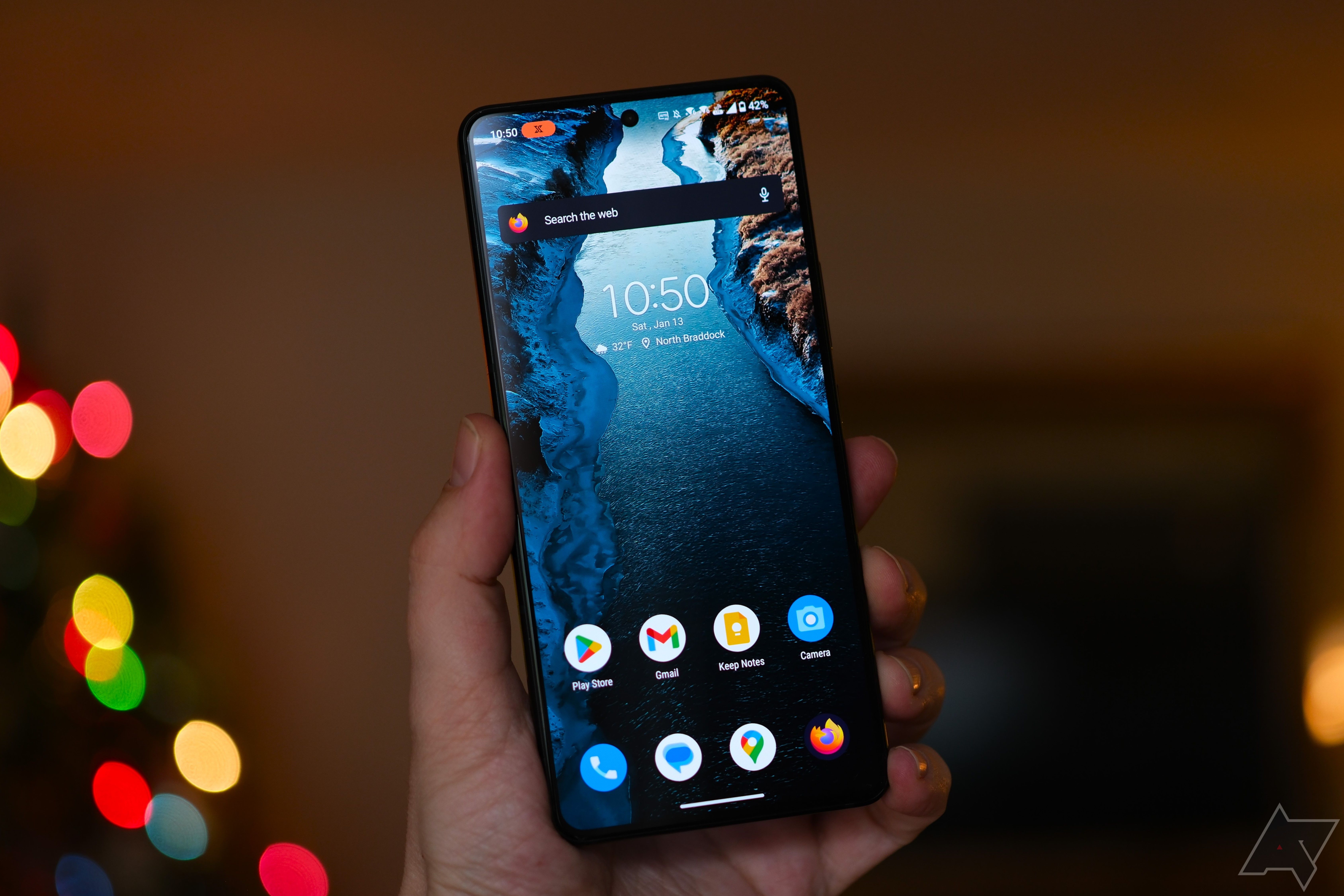
Asus ROG Phone 8 Pro review: I’m not sure this is a gaming phone
Asus has changed the ROG Phone formula, and I’m not convinced it’s for the better
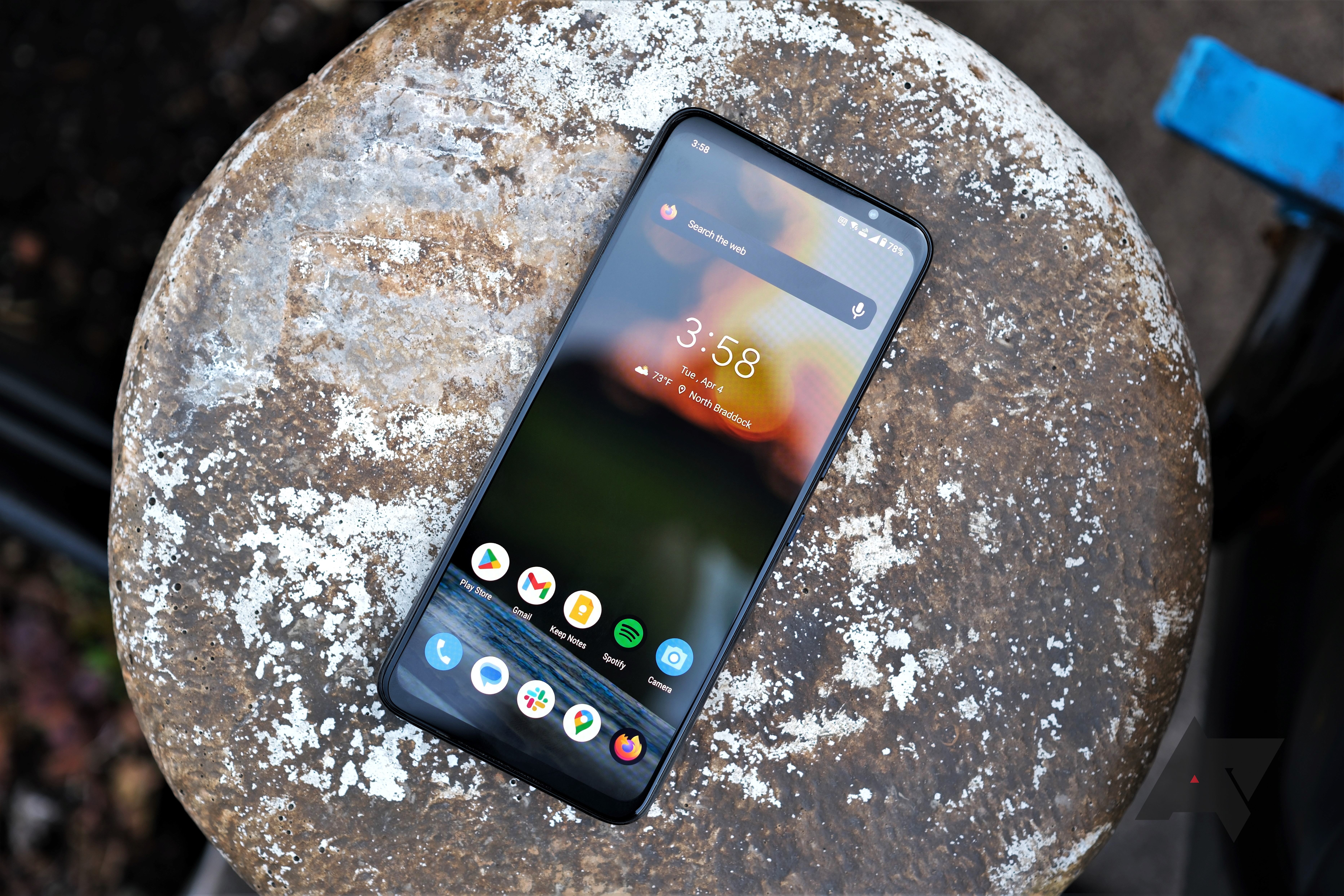
Asus ROG Phone 7 Ultimate review: High score
The king of mobile gaming is back for its crown
Design
Revolution or regression?
The ROG Phone series has always been known for its bold, “in-your-face” gamer aesthetic. But this year, the ROG Phone 8 throws tradition out the window, opting for a complete design overhaul that brings it closer to the mainstream flagship scene.
Previous ROG Phones, including the Phone 7, sported a distinct “gamer” look with sharp lines, aggressive patterns, and prominent LED lighting. The Phone 7’s triple camera array sits horizontally on the glass back, and the moderate camera bump allows for near-flat placement. However, its chunkiness (10mm thickness, 240g weight) and sizable top and bottom bezels are undeniable.
The ROG Phone 8, in contrast, embraces a sleeker, more mainstream flagship look. Gone are the sharp edges and patterns; instead, there are flattened edges, a textured matte glass back, and a near bezel-less display. It’s slimmer and lighter, too, shrinking to 8.9mm and 225g, making it a more comfortable everyday carry. Remember that this is still a delicate phone, and investing in a good protective case is always a good idea.
In terms of durability, the ROG Phone 8 boasts an IP68 rating, providing robust protection against dust and water ingress, a notable upgrade over the ROG Phone 7’s IP54 rating, which only offers protection against minor splashes. Another new addition this year is wireless charging support, which the ROG Phone 7 misses out on.
But this transformation isn’t without trade-offs. The once unobtrusive camera island now protrudes more, and the elimination of bezels means losing the dual front-facing speakers, replaced by a conventional stereo setup with a bottom-firing speaker. Competitive gamers might miss the bezels even more because they’ll have to deal with a punch-hole on their gaming screen, which was not a problem with the ROG Phone 7 because the selfie camera was conveniently housed in the top bezel.
In terms of gaming identity, all the ROG Phone 8 has going for it is the RGB logo adorning the exterior. Notably, key gaming-centric features remain intact on both devices, including the 3.5mm headphone jack and the secondary USB-C port on the side, which is convenient for charging during landscape gaming sessions.
Additionally, the phones feature pressure-sensitive trigger buttons along the right edge. Asus also chose to retain the off-center bottom USB-C port, which limits both phones’ compatibility with third-party controllers (requiring a centered port) — a design choice that directs users towards Asus’s proprietary controller.
Display
Win some, lose some
Both the ROG Phone 8 and the ROG Phone 7 deliver stunning visuals on their 6.78-inch AMOLED screens. They have the same impressive 165Hz refresh rate, which is one of the highest in the market. A higher refresh rate means a smoother and more responsive display, which is essential for gaming. They have the same FHD+ (1080p) resolution on offer, but they differ in some key areas.
The ROG Phone 7 has noticeable bezels on the top and bottom, which may look outdated to some users. The ROG Phone 8 has a more eye-pleasing, bezel-less design, but it may also have a higher risk of unwanted screen touches during gaming, especially when using the AirTriggers.
The ROG Phone 8’s screen is brighter, too, touting a peak brightness of 2500 nits (compared to 1500 nits on the Phone 7) and a max brightness of 1600 nits (vs. 1000 nits) in High Brightness Mode (HBM), which should make it significantly brighter in outdoor settings and during multimedia consumption.
Another improvement that the ROG Phone 8 has over the ROG Phone 7 is the Gorilla Glass Victus 2 protection, which is the latest and strongest glass from Corning. It offers better scratch and drop resistance than the Gorilla Glass Victus on the ROG Phone 7, which is already quite durable.
Software and performance
How much is enough?
If you are looking for a phone that can handle any game or app you throw at it, you can’t go wrong with either the ROG Phone 8 or the ROG Phone 7. The phones are designed to deliver the ultimate gaming experience, with top-of-the-line hardware and software features.
The ROG Phone 7 has a Snapdragon 8 Gen 2 chipset, which is still one of the best processors on the market, with a minimum of 12GB of RAM. The in-built storage is of UFS 4.0 standard, which offers the fastest read/write speeds possible on smartphones currently.
The ROG Phone 8 comes with the Snapdragon 8 Gen 3 chipset, which is the most advanced processor currently available for Android phones. It also comes with a whopping 16GB of RAM, and the same UFS 4.0 storage, which means you can load your games and files quicker than ever.
While benchmarks might favor the ROG 8, in real-world scenarios, the difference might be negligible for most users. Both phones are capable of handling any demanding task or game you throw at them, ensuring uninterrupted gameplay sessions. They also run on a ROG-themed Android experience, which is highly customizable and optimized for gaming.
You can access the Armory Crate app, which lets you tweak various settings for each game, such as performance, display, network, touch, and audio. X Mode can also be enabled, which boosts your phone’s performance to the maximum, at the cost of battery life and temperature. This mode provides access to additional features, such as AirTriggers.
The ROG Phone 8 comes with Android 14 out of the box. The ROG Phone 7 debuted with Android 13 but has already received the Android 14 update. Asus promises only two years of OS upgrades for its phones, which is nowhere close to other flagships offering up to seven years of software support.
Battery
Power for days
The ROG Phone 7 boasts a mammoth 6,000mAh battery, potentially lasting up to two days for moderate users. While the ROG Phone 8 scales down to a 5,500mAh battery, the more efficient Snapdragon 8 Gen 3 chip should still offer more than a full day of use.
Both support 65W wired charging (with the charging brick included in the box), reaching 0-100% in around an hour, ensuring you’re back in the game quickly. The ROG Phone 8 adds another perk: 15W wireless charging, which is absent on the ROG Phone 7.
Cameras
The biggest upgrade
Asus has made a big leap in the camera department with the ROG Phone 8, which inherits some of the features and improvements from the Zenfone 10. The ROG Phone 7, on the other hand, has a more modest camera setup, which may not satisfy photography enthusiasts. Both phones have a 50MP primary camera, but the ROG Phone 8 has a clear advantage here, as it has a 6-axis gimbal stabilizer, which offers much smoother and steadier video recording.
The ROG Phone 8 also has a new 32MP telephoto camera, which can zoom up to 3X optically and has optical image stabilization (OIS) as well. This is a great addition for capturing distant subjects or portrait shots and is something that most flagship phones offer nowadays. The ROG Phone 7 does not have a telephoto camera but instead has a 5MP macro camera, which is best left unused.
The 13MP ultrawide camera and the 32MP selfie camera are the same on both phones, but it’s clear that Asus has finally understood that you can’t sell $1,000 phones without good cameras. Image processing has definitely received an upgrade, with AI working its magic to optimize shots. However, it’s important to remember that the phones still fall short of the mature camera algorithms offered by industry leaders like Apple and Samsung.
Which is right for you?
The ROG Phone 8 and the ROG Phone 7 are both excellent gaming phones, but they cater to different users. The ROG Phone 8 is the more versatile and premium option, as it has a more refined and mainstream design, a brighter and bezel-less display, a better camera system, and some extra features like wireless charging and an IP68 rating.
If you’re seeking a gaming phone that can seamlessly transition into your everyday flagship device, the ROG Phone 8 is the ideal pick.
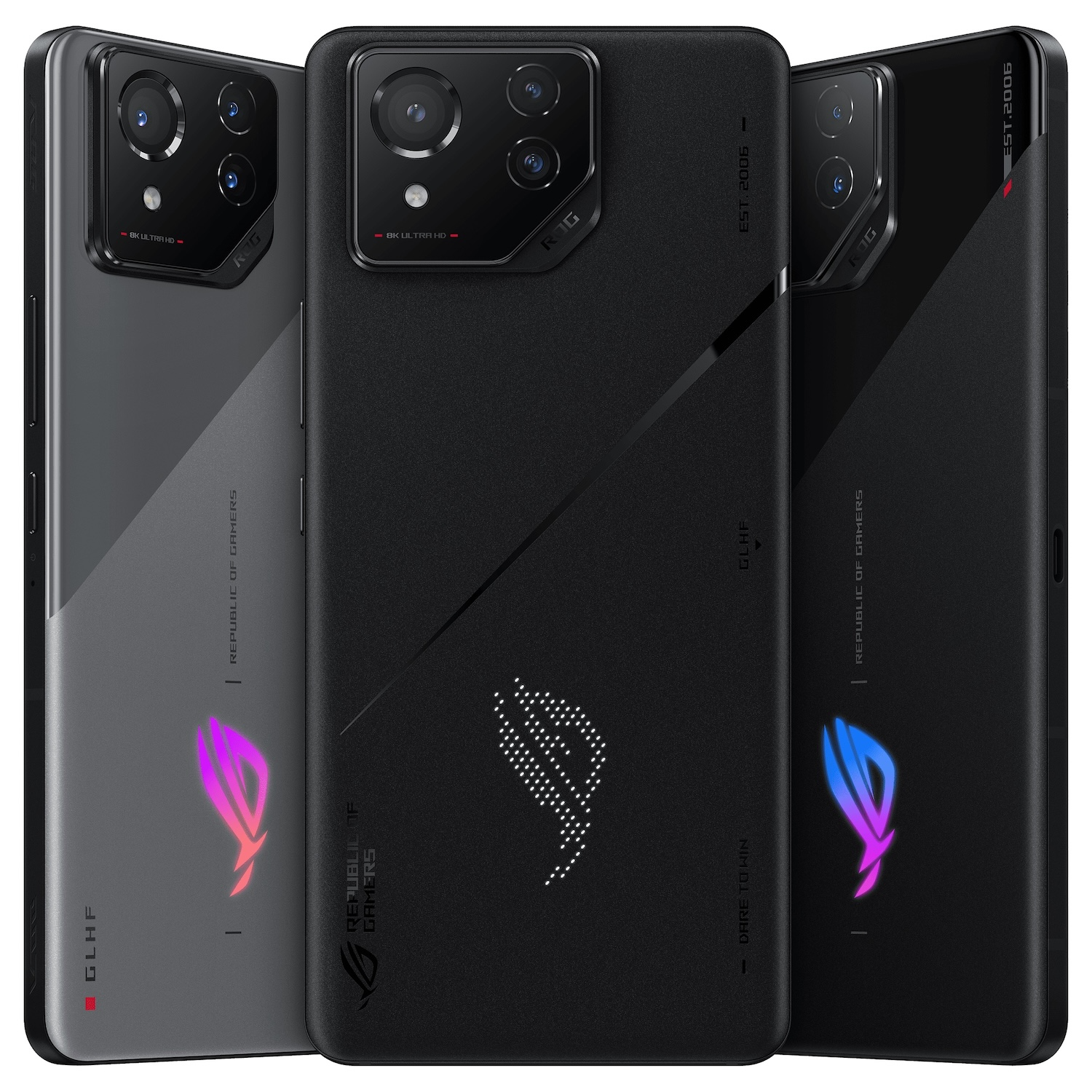
Asus ROG Phone 8
Flagship phone that can game
If you’re spending $1,000 on a phone and aren’t going to use it just for gaming, the ROG Phone 8 takes the top spot. Its sleeker design, brighter display, IP68 protection, and wireless charging capabilities make it more suitable for everyday use.
That being said, if you’re already an owner of the ROG Phone 7, consider whether the upgraded cameras are a game-changer for you. Unless you’re dissatisfied with the camera performance on your current device, there’s no urgent need to upgrade.
It gives you a more gamer-oriented design, a larger and longer-lasting battery, and an impressive speaker setup. While it trails behind its sibling in terms of cameras and other features, its performance should still hold up happily for at least another year, and hopefully longer. It’s just a shame it’s hard to find new, even at a discount, so current buyers don’t get much of a choice: it’s the ROG Phone 8 or nothing.
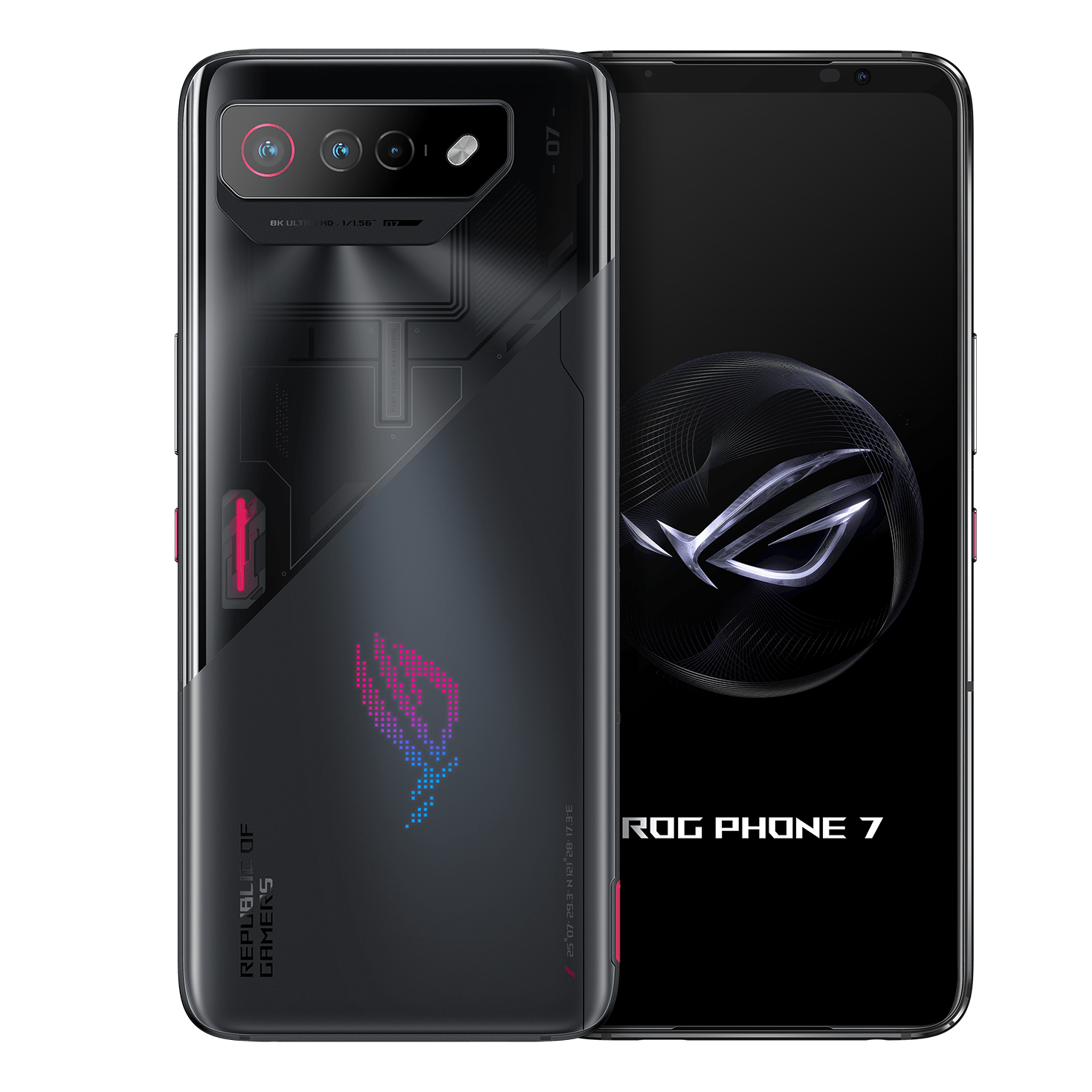
Asus ROG Phone 7
Gaming handheld that can be a phone
If you’re a dedicated gamer prioritizing raw performance, a mammoth battery, and immersive audio, the ROG Phone 7 remains an undeniable beast. It might not boast the latest tech features like wireless charging or flagship cameras, but its sheer power and gaming DNA might be hard to resist, especially if you can find it at a discounted price.




